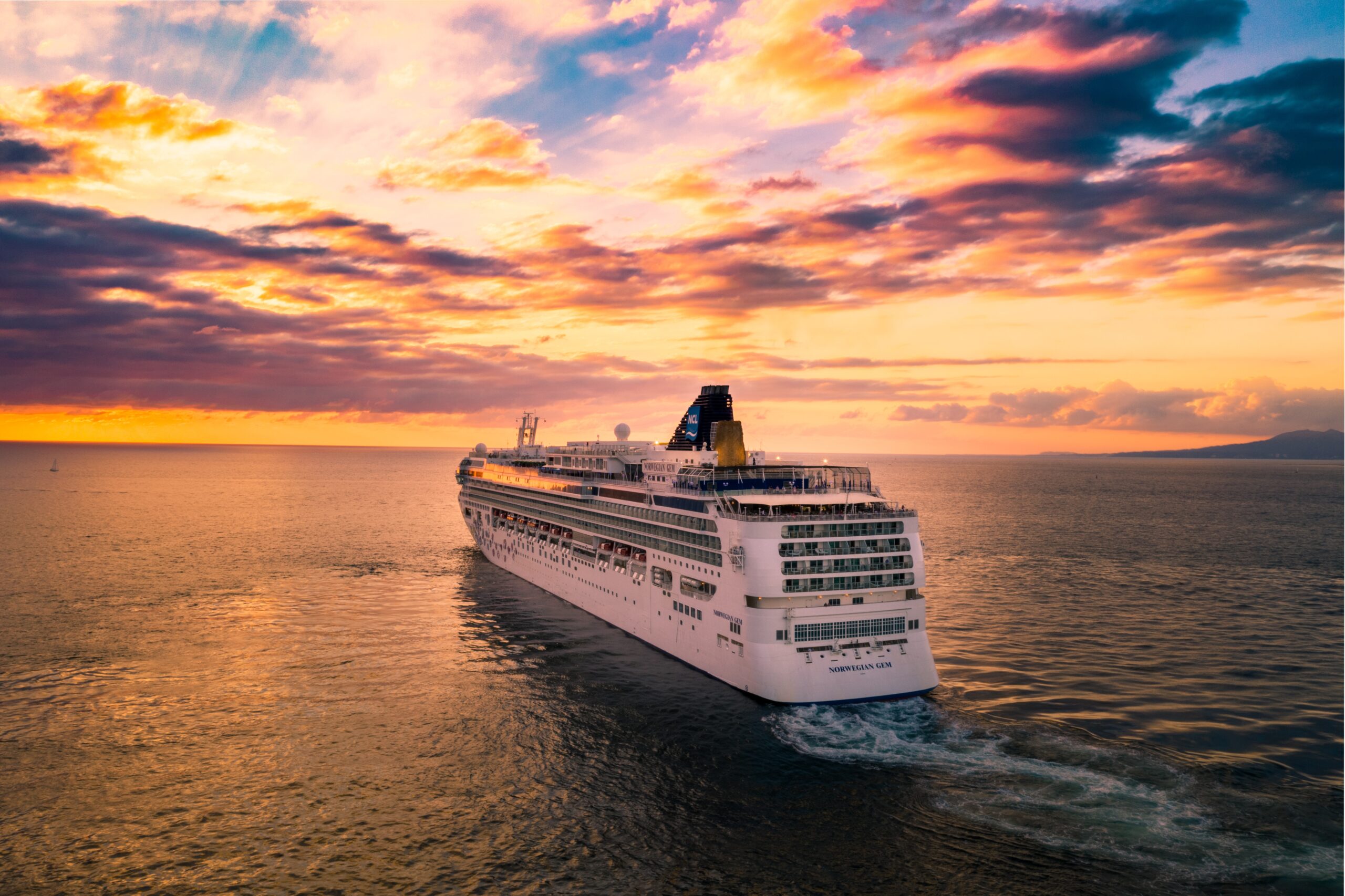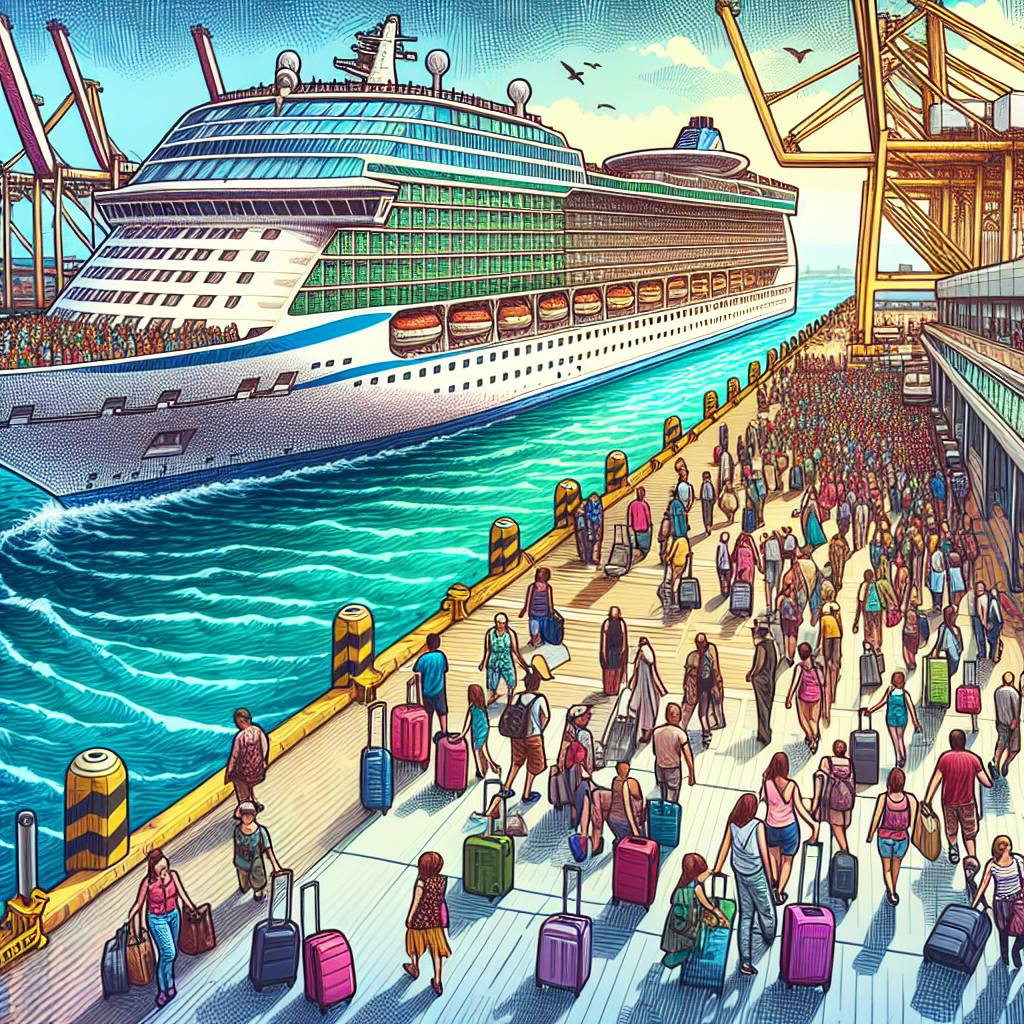
So, you’ve had an amazing cruise and now it’s time to say goodbye to the ship and step onto land once again. But what exactly is the process for disembarkation at the end of the cruise? Well, let me break it down for you.

Preparing for Disembarkation
Informing Passengers
As your cruise vacation comes to an end, it’s important to stay informed about the disembarkation process. The cruise line will make announcements throughout the ship to keep passengers updated on the procedures and timelines. Pay close attention to these announcements as they will provide vital information about what to expect during the disembarkation process.
Settling Accounts
Before you disembark, you will need to settle your onboard accounts. This includes any charges you have made during your time on the ship, such as onboard purchases, gratuities, and specialty dining fees. Most cruise lines offer a variety of payment methods, including cash and credit card. The ship’s guest services desk will provide you with a detailed statement of your charges, allowing you to review and settle your account.
Packing and Luggage
When it’s time to disembark, you’ll need to pack and prepare your luggage. It’s a good idea to start packing a day or two before disembarkation day to ensure you have everything organized and in order. Be sure to check your cruise line’s guidelines regarding luggage restrictions, as each company may have different policies. It is also advisable to separate your belongings by category, making it easier to locate specific items when needed.
Collecting Personal Belongings
Before you leave your cabin for the final time, double-check that you haven’t left any personal belongings behind. It’s easy to overlook items when you’re focused on disembarkation, so take the time to thoroughly search your cabin and bathroom. Check the safe, closets, and drawers to make sure you haven’t forgotten anything. Once you are confident that you have gathered all your belongings, you’re ready to proceed to the disembarkation briefing.
Disembarkation Briefing
Announcements and Documentation
The disembarkation briefing is designed to provide passengers with essential information for a smooth and organized departure from the ship. The cruise line will make announcements either in person or through the cabin’s intercom system, notifying passengers of the time and location of the briefing. It is crucial to attend this briefing as it will cover important details, including required documentation and any changes to the disembarkation schedule.
Port Information
During the briefing, you will receive valuable information about the destination port, such as transportation options, local attractions, and recommended activities. This is an excellent opportunity to gather any last-minute tips or recommendations from the ship’s staff or guest services. If you have booked excursions or tours for your post-cruise activities, you might also receive additional information about meeting points or revised itineraries.
Customs and Immigration Procedures
Understanding the customs and immigration procedures is crucial for a seamless disembarkation process. The briefing will explain the necessary paperwork, such as passport control and customs declarations, and any specific requirements for the destination port. Cruise lines typically provide guidance on the procedures, making sure passengers are well-prepared to navigate through the customs and immigration process efficiently.
Safety Instructions
As always, safety is a top priority on a cruise ship, and the disembarkation briefing will include important safety instructions. These instructions may cover emergency evacuation procedures and the location of assembly points in case of an emergency. Familiarize yourself with these instructions to ensure you are prepared and know what to do in the event of an unforeseen situation.
Debarkation Day
Disembarkation Schedule and Zones
On debarkation day, the ship will have a well-organized schedule outlining the order in which passengers will disembark. This schedule, often referred to as the debarkation schedule, is typically determined by factors such as cabin location, transportation arrangements, and the time of onward travel. Each passenger will be assigned a specific disembarkation zone, and announcements will be made indicating when each zone can begin the disembarkation process.
Luggage Handling
Cruise lines have efficient systems in place to handle passenger’s luggage during disembarkation. Most cruise lines provide color-coded tags that should be attached to your luggage the night before disembarkation. These tags help staff identify and organize the luggage based on the assigned disembarkation zones. Once you have disembarked, the luggage will be available for collection in designated areas on the port.
Leaving the Ship
When your assigned zone is called, it’s time to leave the ship. Follow the instructions given during the disembarkation briefing to ensure a smooth and orderly departure. Be mindful of other passengers and use the designated walkways and exits to disembark. Take your time and move at a comfortable pace, ensuring you have all your personal belongings with you.
Final Greetings
As you exit the ship, you will typically be greeted by the ship’s crew members, who will bid you farewell and offer assistance if needed. This is a great opportunity to express your gratitude for the excellent service provided throughout your cruise experience. Take a moment to say goodbye and thank the crew members who have made your vacation memorable.
Customs and Immigration
Passport Control
Passport control is a crucial step during the disembarkation process. Passengers will need to present their passports to the customs and immigration officials for verification and departure stamps. Follow any instructions given by the ship’s staff or provided during the disembarkation briefing to ensure a smooth passport control process. Make sure your passport is easily accessible and have any necessary immigration forms filled out beforehand to expedite the process.
Customs Declarations
When disembarking, you may be required to fill out customs declaration forms. These forms are used to declare any items you are bringing into the country that may be subject to customs duties or restrictions. It’s important to be honest and accurate when completing these forms. If you have any questions or concerns about the customs declaration, consult the ship’s staff for guidance.
Face-to-Face Inspections
During the disembarkation process, customs and immigration officials may conduct face-to-face inspections. These inspections are random and aim to ensure the accurate completion of customs declarations and verify the contents of luggage. If selected for inspection, remain calm and cooperate with the officials. They are there to ensure compliance with customs regulations and to maintain security.

Transportation and Transfer
Shuttle Buses
At some ports, cruise lines provide shuttle bus services to transport passengers from the ship to designated locations, such as city centers or transportation hubs. These shuttle buses are a convenient option for those who prefer not to arrange private transportation or explore the port independently. Check with the ship’s staff or guest services for information on shuttle bus availability, schedules, and any associated costs.
Private Transportation
If you prefer a more personalized transportation experience, arranging private transportation is an excellent option. Many ports have taxis, car rental services, or private transportation companies available for hire. Depending on your preferences and budget, you can choose the most suitable option to take you to your desired destination. It is advisable to research and book private transportation in advance for a seamless post-cruise transfer.
Airport Transfers
For passengers heading straight to the airport after disembarkation, many cruise lines offer airport transfer services. These services ensure a hassle-free journey from the ship to the airport, eliminating the need to find and arrange transportation independently. Contact the ship’s staff or guest services to inquire about airport transfer options, availability, and any additional charges that may apply.
Local Transportation Options
If you plan to explore the port or extend your stay in the destination city, familiarize yourself with the local transportation options. Ports typically have various modes of transportation, including buses, trams, trains, or even boats, depending on the location. Research the local transportation network, routes, schedules, and fares to make informed decisions about getting around and experiencing the port city.
Post-Cruise Activities
Exploring the Port
After disembarking, take the time to explore the port city and immerse yourself in the local culture and attractions. From historic landmarks and museums to vibrant markets and stunning natural landscapes, there is something for everyone. Consider creating an itinerary or joining a guided city tour to make the most of your time in the port. Indulge in local cuisine, shop for souvenirs, and savor the unique experiences the port city has to offer.
Excursions and Tours
If you have pre-booked excursions or tours for your port visit, ensure you are aware of the meeting points and departure times. Check your itinerary and any updates provided by the tour operator or cruise line. Joining organized excursions is an excellent way to explore the highlights of the port and its surroundings with knowledgeable guides. Whether it’s a hiking adventure, a historical tour, or a scenic boat ride, there are often options to suit every interest.
Accommodations
If you plan to extend your stay in the port city, finding suitable accommodations is essential. Research and book accommodations in advance to secure the best options within your budget and desired location. Many cruise lines offer assistance with post-cruise accommodations, providing recommendations or even partnerships with hotels. Take advantage of these resources to streamline your post-cruise travel arrangements.
Additional Travel Plans
If you have additional travel plans after your cruise, consider the logistics and connections required. Whether you’re continuing your journey by air, train, or other means of transportation, make sure you have ample time between disembarkation and your next travel endeavor. Account for potential delays or unforeseen circumstances to avoid unnecessary stress. Coordinate with relevant transportation providers and ensure you have all necessary tickets or reservations in place.
Disability and Special Assistance
Accessible Disembarkation Options
Cruise lines prioritize accessibility and cater to passengers with disabilities or mobility limitations. They offer accessible disembarkation options to ensure that all passengers can smoothly transition from the ship to the port. If you require special assistance, such as wheelchair accessibility or extra time, notify the cruise line in advance. They will make the necessary arrangements and provide guidance on accessible disembarkation procedures.
Assistance for Mobility Devices
Passengers who use mobility devices, such as wheelchairs or mobility scooters, will receive assistance throughout the disembarkation process. Cruise lines offer trained personnel to help passengers with mobility devices navigate the ship’s ramps and gangways. During disembarkation, special arrangements are made to ensure a safe and comfortable exit. Consult the cruise line or guest services for specific instructions and assistance tailored to your needs.
Special Needs Services
Cruise lines strive to accommodate passengers with special needs to ensure an enjoyable and comfortable cruise experience. This commitment extends to the disembarkation process, where special needs services are available. Whether you require assistance with medical equipment, dietary restrictions, or any other specific needs, communicate your requirements to the cruise line in advance. They will provide the necessary support and guidance to make your disembarkation as smooth as possible.
Claiming Checked Luggage
Baggage Claim Area
Once you have disembarked and cleared customs and immigration, you will proceed to the baggage claim area. This designated area is where passengers collect their checked luggage. Follow the signs or directions provided by the port staff or cruise line to locate the baggage claim area. Be prepared for some waiting time, as multiple passengers will be collecting their luggage simultaneously.
Identification and Receipts
To claim your checked luggage, you will need to present identification or proof of ownership to the port staff. This is typically done by showing your baggage claim tags or receipts received during the check-in process at the beginning of your cruise. Make sure to keep these documents easily accessible, as you will need them to match your luggage with the corresponding claim tags.
Lost Luggage Procedures
In the rare event that your luggage is lost or misplaced, contact the designated port staff immediately. They will guide you through the necessary procedures to locate and retrieve your belongings. Provide them with as much information as possible regarding the appearance and contents of your luggage. Most cruise lines have protocols in place to swiftly resolve lost luggage cases, ensuring passengers are reunited with their belongings promptly.

Finalizing Onboard Accounts
Financial Settlement Process
As mentioned earlier, settling your onboard accounts is a crucial step before disembarkation. Cruise lines typically provide a final statement of charges, detailing all your onboard expenses. Review this statement carefully to ensure its accuracy and address any discrepancies. Once you have reviewed and confirmed the charges, you can settle your account through various payment methods accepted by the cruise line.
Credit Card Verification
If you have provided a credit card for your onboard charges, the cruise line will verify the card and process the payment during the disembarkation process. Make sure your credit card is active and has sufficient funds to cover the charges. In case of any issues or changes with your credit card, notify the ship’s guest services in advance to explore alternative payment options.
Cash Payments and Refunds
For those settling their accounts with cash, the process may vary depending on the cruise line’s procedures. Some cruise lines require passengers to visit the ship’s guest services desk to settle their accounts in cash. Others have designated cash payment stations in the disembarkation area. If you have any remaining onboard credit, check with the cruise line regarding their refund policies and processes. It’s best to clarify any cash-related matters before disembarkation day to avoid any last-minute confusion or delays.
Cruise Line Loyalty Programs
Loyalty Benefits and Perks
Cruise line loyalty programs reward repeat passengers with exclusive benefits and perks. These programs aim to recognize and appreciate the loyalty of frequent cruisers. Depending on your membership level, you may enjoy privileges such as priority disembarkation, early access to onboard facilities, discounted or complimentary services, and special events. Familiarize yourself with your loyalty program benefits to take full advantage of these perks during the disembarkation process.
Member Disembarkation Privileges
One of the advantages of being a member of a cruise line loyalty program is the opportunity for enhanced disembarkation privileges. Higher-tier members may be granted priority disembarkation, allowing them to leave the ship earlier than other passengers. This privilege minimizes wait times and ensures a smoother and more efficient disembarkation experience. Members should follow the instructions provided by the cruise line to utilize these privileges and make their departure as seamless as possible.
In conclusion, the disembarkation process at the end of a cruise involves several steps and considerations. By staying informed, preparing in advance, and following the instructions provided by the cruise line, you can ensure a smooth and stress-free transition from the ship to your next destination. Whether you’re exploring the port city, continuing your travels, or heading back home, remember to savor the final moments of your cruise experience and bid farewell to the ship and its crew with gratitude.





